There were many Famous Colonists that arrived in the New World. Many did not come from Royal Birth, while some had long lines of nobility through their veins, but each is remembered the same.
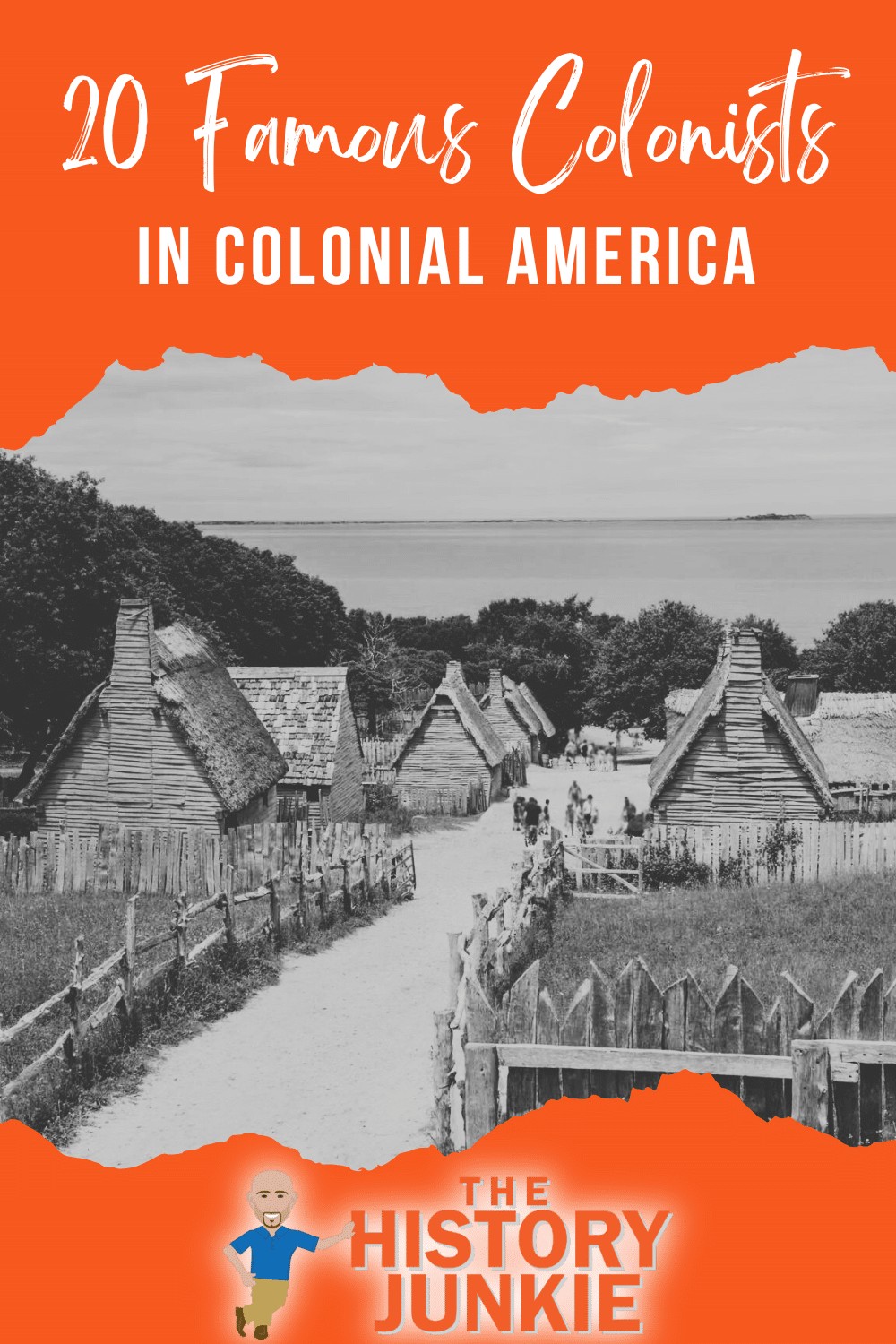
The New World gave birth to new heroes, and these new heroes are still studied today. Their courage and ingenuity laid the foundation for what became a new nation, and for most on this list, a new nation was not their goal.
While I could name more than 20 famous colonists, I wanted to give certain names their due.
Men like Benjamin Franklin, George Washington, and some of the other famous Americans could be on this list, but they are on so many others that I think it gets a bit boring seeing the same names all the time.
Jump to:
- 1. Captain John Smith
- 2. William Bradford
- 3. John Winthrop
- 4. Roger Williams
- 5. Anne Hutchinson
- 6. Virginia Dare
- 7. John White
- 8. Myles Standish
- 9. John Rolfe
- 10. Thomas Hooker
- 11. William Penn
- 12. Peter Stuyvesant
- 13. George Calvert
- 14. John Mason
- 15. Sir Thomas Dale
- 16. Peter Minuit
- 17. James Oglethorpe
- 18. Thomas Hutchinson
- 19. Anne Bradstreet
- 20. Patrick Henry
1. Captain John Smith
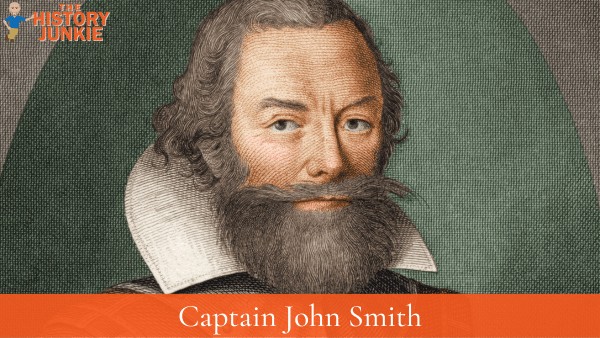
John Smith was a 17th-century English soldier, explorer, colonial governor, admiral of New England, and author. He was one of the most important figures in the establishment of Jamestown, the first permanent English settlement in North America.
Also Read: 10 Facts About Colonial America
Smith arrived in Jamestown in 1607 and soon became a leader of the colony. In 1608, he led an exploration of the Chesapeake Bay area, becoming the first English explorer to map the region.
He was also instrumental in negotiating peace with the local Native American tribes.
In 1609, Smith was captured by the Powhatan tribe and was taken to their chief, Powhatan. According to Smith's account, Powhatan's daughter, Pocahontas, saved his life by placing her head on his as he was about to be executed. Smith was released and returned to Jamestown.
Smith left Jamestown in 1609 and returned to England.
He later explored the coast of New England and was knighted by King James I for his services.
2. William Bradford
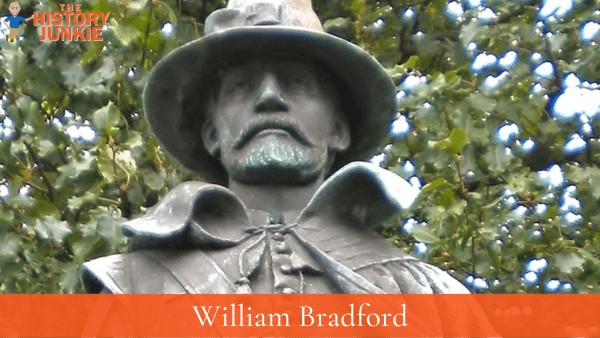
William Bradford was an English Puritan Separatist who fled from King James I's persecution in England to Leiden, Holland. In 1620, he emigrated to the Plymouth Colony on the Mayflower and became a signatory of the Mayflower Compact.
Also Read: List of Mayflower Passengers
Bradford served as Governor of the Plymouth Colony for about 30 years between 1621 and 1657 and was twice elected president of the United Colonies of New England.
He also wrote a journal of the first years of the Plymouth Colony, titled Of Plymouth Plantation.
His journal gives us insight into the colony and its hardships. It also gives us information about the families that came over and what became of them.
3. John Winthrop
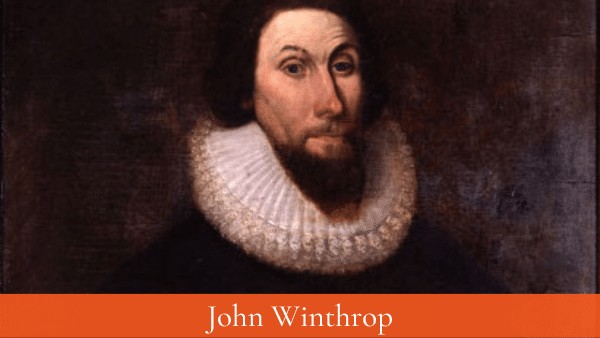
John Winthrop was an English lawyer who founded the Massachusetts Bay Colony in 1630. He served as governor of the colony for 12 of its first 20 years and was a major influence on its development.
Winthrop's vision of the colony as a Puritan "city upon a hill" helped to shape the governments and religions of neighboring colonies.
Also Read: 25 Facts About Massachusetts Bay Colony
John Winthrop served as governor or lieutenant governor of the Massachusetts Bay Colony for 18 years between 1629 and 1649. He was a moderate figure in the colony, clashing with both the more conservative and liberal factions.
Winthrop was a respected political figure, but his attitude toward governance was authoritarian by modern standards.
He resisted attempts to widen voting and other civil rights beyond a narrow class of religiously approved individuals, opposed attempts to codify a body of laws that the colonial magistrates would be bound by, and also opposed unconstrained democracy.
The authoritarian and religiously conservative nature of Massachusetts rule was influential in the formation of neighboring colonies, which were formed in some instances by individuals and groups opposed to the rule of the Massachusetts elders.
4. Roger Williams
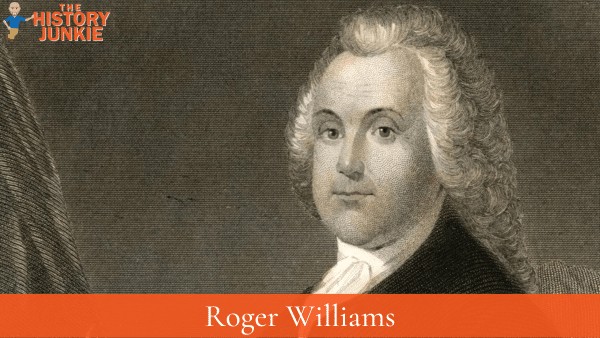
Roger Williams was an English-born Puritan minister who founded the colony of Providence Plantations in 1636.
Roger Williams was expelled from the Massachusetts Bay Colony by the Puritan leaders in 1636 because he believed in religious freedom and the separation of church and state.
He founded Providence Plantations in the same year as a refuge for people of all faiths.
In 1638, he founded the First Baptist Church in America in Providence and also studied the language of the New England Indians and published the first book-length study of it in English.
He also had fair dealings with the Native Indians, which most colonies did at this time. He did support the Massachusetts Bay Colony during King Philip's War.
He is generally recognized as a man who had ideas ahead of his time.
5. Anne Hutchinson
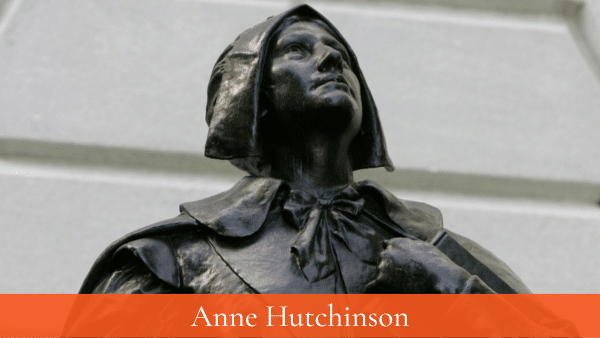
Anne Hutchinson was a Puritan minister who challenged the authority of the Puritan Church in Massachusetts Bay Colony.
She was eventually tried and convicted of heresy, and she and her supporters were banished from the colony.
Anne Hutchinson began to hold weekly meetings in her home to discuss religious matters. Her meetings became increasingly popular, and she began to challenge the authority of the Puritan Church.
She was accused of heresy and was tried and convicted in 1637. She was banished from Massachusetts Bay Colony, along with her family and many of her supporters.
Anne Hutchinson and her supporters founded the settlement of Portsmouth, Rhode Island in 1638. After her husband's death a few years later, threats of Massachusetts annexing Rhode Island compelled Hutchinson to move to the lands of the Dutch.
She settled near Split Rock in what later became The Bronx in New York City. However, she was killed in 1643 during Kieft's War along with six of her children and other household members by the Siwanoy Indian tribe.
Only her nine-year-old daughter Susanna survived.
6. Virginia Dare
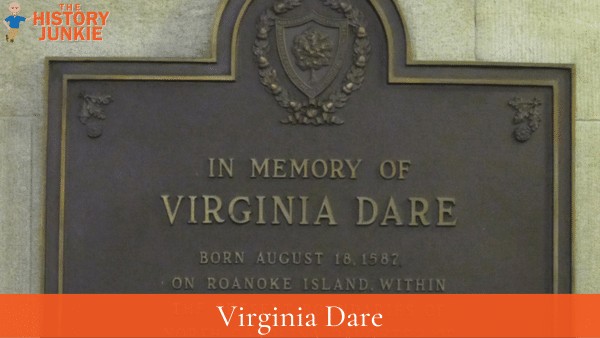
Virginia Dare was the first English child born in America. She was born on August 18, 1587, in the Roanoke Colony.
Her grandfather, John White, was the governor of the colony. When White returned to England three years later to get supplies, he found the colony abandoned.
The fate of Virginia Dare and the other colonists is unknown.
Virginia Dare has been a prominent figure in American myth and folklore for over 400 years. She has been featured in many different works of art, literature, and commerce, and her name has been used to represent a variety of things to different people.
7. John White
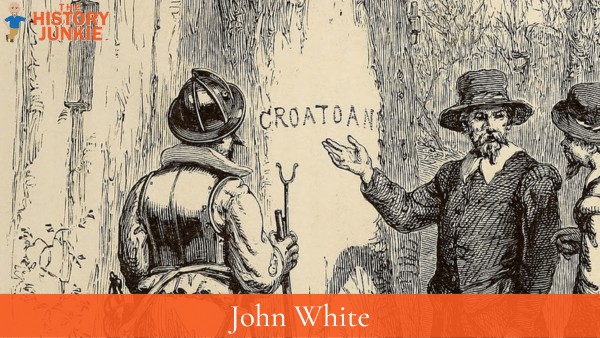
John White was an English colonial governor, explorer, artist, and cartographer. He was among those who sailed with Richard Grenville in the first attempt to colonize Roanoke Island in 1585, acting as an artist and mapmaker to the expedition.
He would most famously briefly serve as the governor of the second attempt to found Roanoke Colony on the same island in 1587.
He made several watercolor sketches of the surrounding landscape and the native Algonquin peoples, which are now preserved in the print room of the British Museum.
John White was the governor of the "Lost Colony" on Roanoke Island. He returned to England for supplies in 1587 but was delayed due to the Spanish Armada.
Also Read: 7 Facts About The Spanish Armada
When he returned to Roanoke Island in 1590, he found the colony deserted. White never gave up hope that his daughter and granddaughter were still alive.
8. Myles Standish
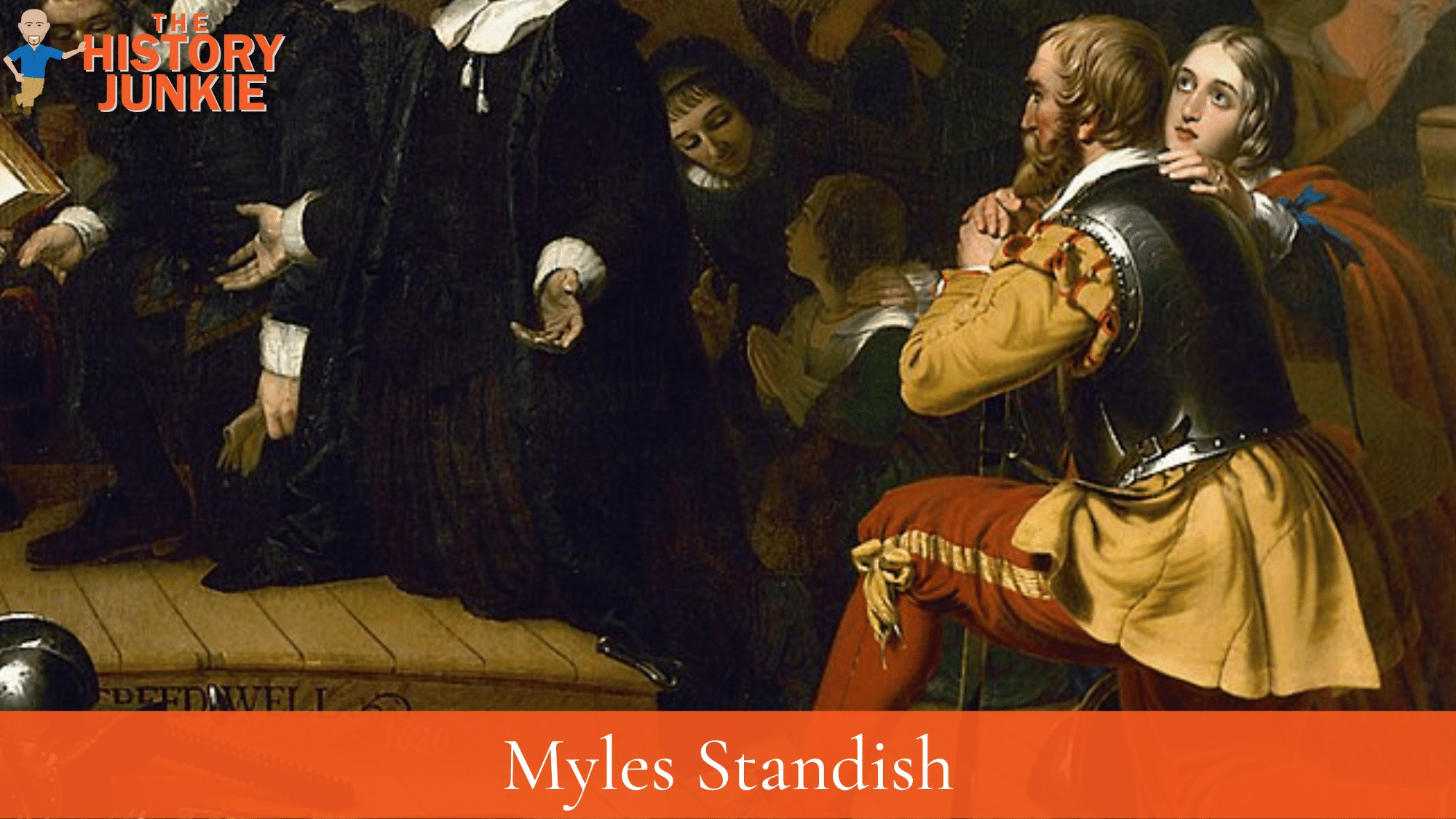
Myles Standish was an English military officer and colonist who was hired by the Pilgrims to be their military adviser. He accompanied the Pilgrims on the Mayflower and played a leading role in the administration and defense of Plymouth Colony from its foundation in 1620.
He was elected as the first commander of the Plymouth Colony militia and continued to serve in that position for the remainder of his life.
Standish also served as an agent of Plymouth Colony on a return trip to England, as assistant governor of the colony, and as its treasurer.
He was a skilled military leader, but he was also known for his quick temper and his short stature. He was known for his heavy-handed approach to the law, which he took against enemies and friends.
Despite the heavy criticism by his enemies, Myles Standish was well respected within the Plymouth Colony. He held a number of positions of authority, including militia commander, agent to England, and assistant governor.
He made several trips to England to bring trading goods back and to negotiate with the Merchant Adventurers who had financially sponsored the joint-stock company that funded the Pilgrims' voyage.
In the mid-1630s, he moved his family to Duxbury, Massachusetts, which may have been named after his ancestral home. Standish was an heir to a fairly sizeable estate in Lancashire, England, but his lands were lost during the English Civil War.
9. John Rolfe
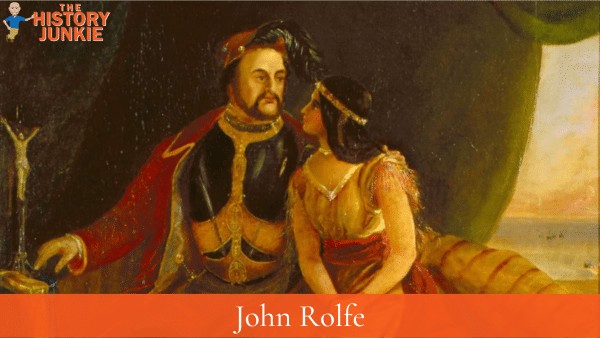
John Rolfe was born in Heacham, Norfolk, England, around 1585. He arrived in Jamestown, Virginia, in 1610 with 150 other settlers.
In 1612, Rolfe began experimenting with growing tobacco. He found that the local variety was too bitter for English tastes, so he began cultivating seeds that he had brought from the West Indies.
In 1613, Rolfe sent some of his West Indian tobacco to England. It was a success, and tobacco quickly became Virginia's most important export crop.
In 1614, Rolfe married Pocahontas, the daughter of the Powhatan chief Powhatan. Their marriage helped to improve relations between the English and the Powhatan people.
Rolfe and Pocahontas had a son together, Thomas. Pocahontas died in England in 1617.
Rolfe continued to be a prominent figure in the Virginia colony. He served as secretary and recorder general of Virginia from 1614 to 1619. He also served as a member of the governor's council.
Rolfe died in 1622, probably in the Jamestown Massacre.
10. Thomas Hooker
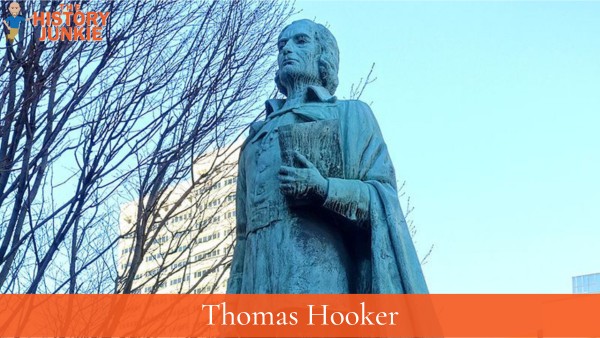
Thomas Hooker was born in Leicestershire, England, in 1586. He studied at Emmanuel College at Cambridge University, where he was ordained as a minister in 1615.
In 1629, Hooker was forced to flee England for Holland due to religious persecution. He settled in Amsterdam, where he became pastor of a Puritan congregation.
In 1633, Hooker and his congregation moved to America and settled in Newtown (now Cambridge), Massachusetts. Hooker quickly became a leading figure in the Massachusetts Bay Colony.
However, he soon began to disagree with the colony's leaders over the issue of church governance. Hooker believed that each congregation should be independent of the others, while the Massachusetts Bay Colony's leaders believed that the colony's churches should be under the control of the state.
In 1636, Hooker and about 100 of his followers left Massachusetts and founded the Connecticut Colony. Hooker served as the colony's first governor and was a leading figure in its government and church.
He was known for his strong advocacy of universal Christian suffrage. It was also under his guidance that the Fundamental Orders of Connecticut were written. This document would influence the Constitution.
11. William Penn
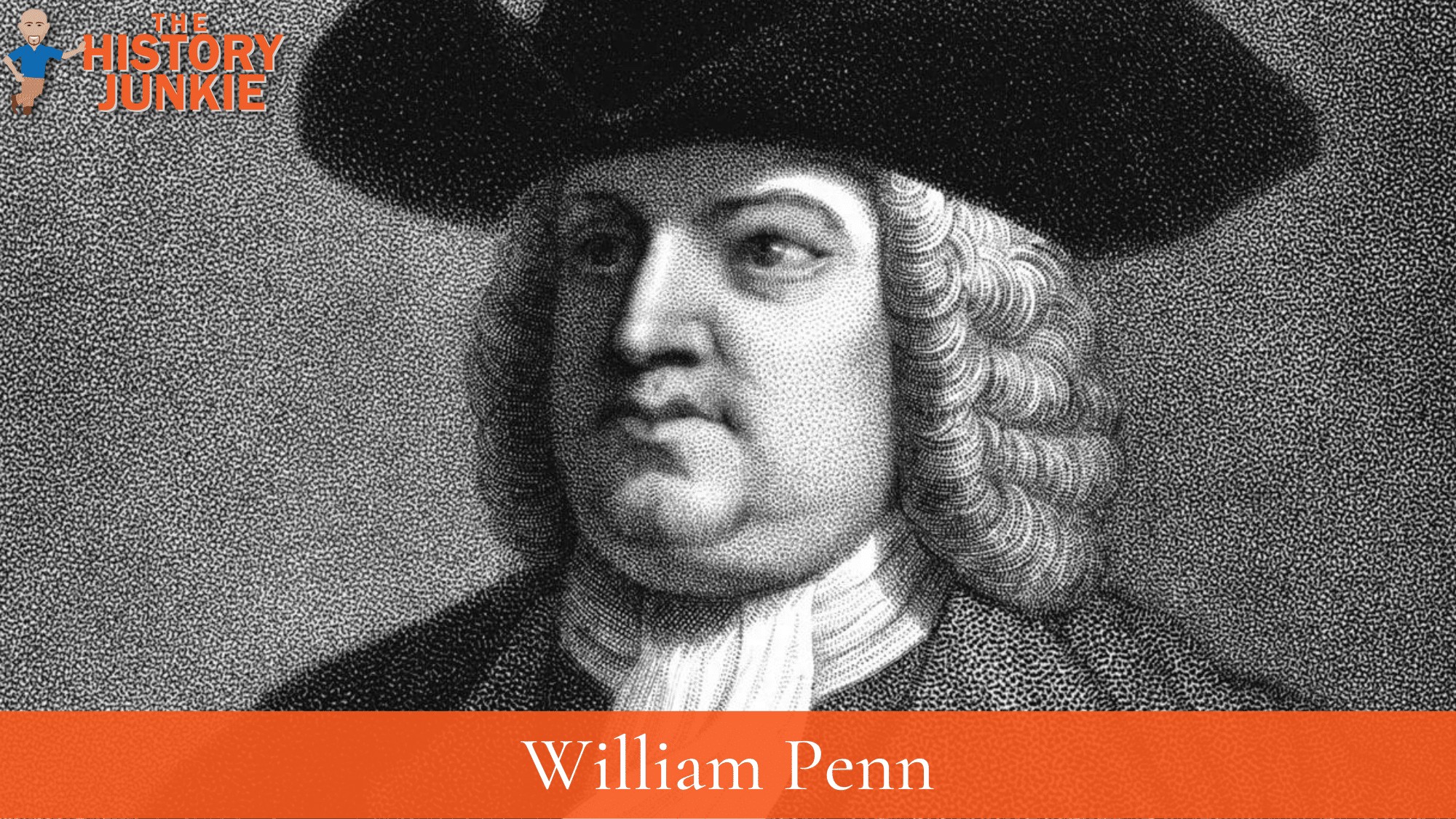
William Penn was an English writer, religious thinker, influential Quaker, and founder of the Province of Pennsylvania, all during the British colonial era.
He was an advocate of democracy and religious freedom and is known for his amicable relations with the Lenape Tribe, with whom he successfully negotiated treaties.
In 1681, King Charles II granted William Penn a large tract of land in North America, including the present-day states of Pennsylvania and Delaware, to offset debts he owed Penn's father.
The following year, Penn sailed to America and founded the colony of Pennsylvania. He negotiated a treaty with the Lenape Native Americans and established the city of Philadelphia.
In 1682, William Penn founded Philadelphia on the western bank of the Delaware River. However, his Quaker government was not viewed favorably by the previous Dutch, Swedish, and English settlers in what is now Delaware.
These settlers had no historical allegiance to Pennsylvania and began petitioning for their own representative assembly.
In 1704, their petition was granted, and the three southernmost counties of Pennsylvania along the western coast of the Delaware River were granted permission to split off and become the new semi-autonomous Delaware Colony.
William Penn was an early advocate for colonial unification. He wrote and urged for a union of all the English colonies in what would later become the United States.
The democratic principles that he included in the West Jersey Concessions and set forth in the Pennsylvania Frame of Government inspired delegates to the Constitutional Convention in Philadelphia to frame the U.S. Constitution, which was ratified by the delegates in 1787.
12. Peter Stuyvesant
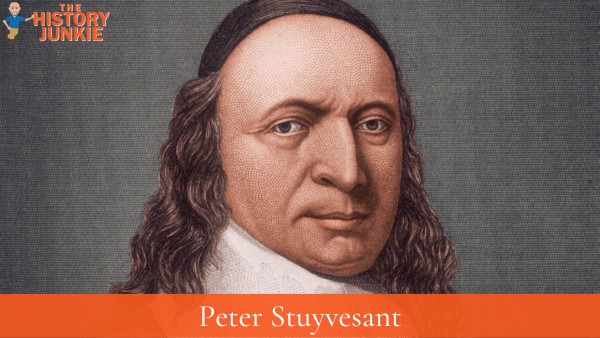
Peter Stuyvesant was a Dutch colonial officer who served as the last director-general of the colony of New Netherland from 1647 to 1664.
He was a major figure in the early history of New York City, and his name is still remembered today in the names of various landmarks and points of interest throughout the city.
Peter Stuyvesant, the last Dutch director-general of the colony of New Netherland, oversaw a great expansion of the settlement of New Amsterdam beyond the southern tip of Manhattan.
Under Stuyvesant's administration, the protective wall on Wall Street, the canal that became Broad Street, and Broadway were all built.
However, Stuyvesant was a fierce opponent of religious pluralism, and he came into conflict with Lutherans, Jews, Roman Catholics, and Quakers who attempted to build places of worship in the city and practice their faiths.
13. George Calvert
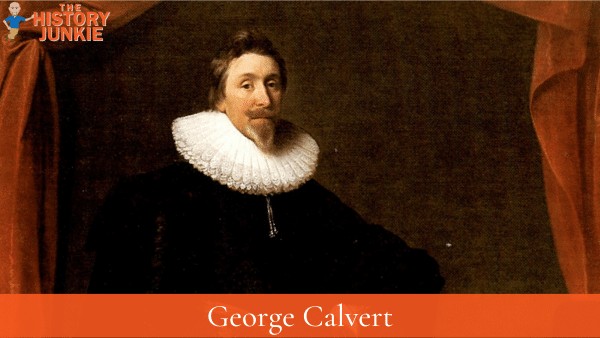
George Calvert, 1st Baron Baltimore, was an English politician who achieved domestic success as a member of parliament and later as Secretary of State under King James I.
However, he lost much of his political power after supporting a failed marriage alliance between Prince Charles and the Spanish House of Habsburg.
Rather than continue in politics, he resigned from all of his political offices in 1625, except for his position on the Privy Council, and publicly declared his Catholicism.
He was created Baron Baltimore in the Peerage of Ireland upon his resignation. Baltimore Manor was located in County Longford, Ireland.
George Calvert, 1st Baron Baltimore, was an English politician and colonist who founded the Province of Maryland in 1632. Calvert was a devout Catholic who sought to create a colony where Catholics could practice their religion freely.
He was the proprietor of Avalon, the first sustained English settlement on the southeastern peninsula on the island of Newfoundland, but he was disappointed by its cold and inhospitable climate.
Calvert died five weeks before the new royal charter was sealed, leaving the settlement of the Maryland colony to his son Cecilius Calvert, 2nd Baron Baltimore.
Cecilius Calvert became the first proprietary governor of Maryland and oversaw its early development.
14. John Mason
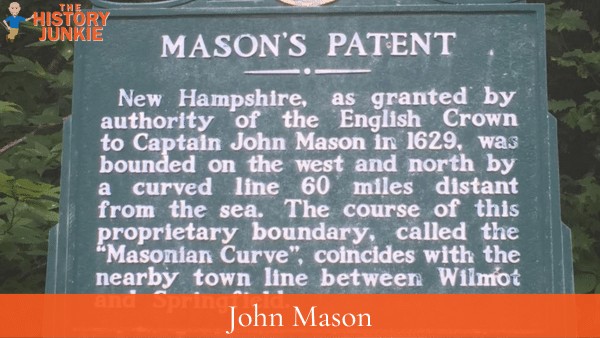
Captain John Mason was an English sailor and colonist who was instrumental in the establishment of various settlements in colonial America. He was born in King's Lynn, Norfolk in 1586 and educated at Peterhouse, Cambridge.
In 1610, King James I appointed Mason to help reclaim the Hebrides. In return, Mason was granted exclusive fishing rights in the North Sea.
However, the Dutch ignored this agreement, and the Scots treated Mason as a pirate.
In 1615, Mason was arrested but soon released after his ship was seized. He was then appointed the second Proprietary Governor of Newfoundland's Cuper's Cove colony, succeeding John Guy.
Mason arrived on the island in 1616 and explored much of the territory. He compiled a map of the island and wrote and published a short tract (or "Discourse") of his findings.
In 1620, King James I's Privy Council issued Captain John Mason a commission and provided him with a ship to suppress piracy in Newfoundland. Mason ceased to be the governor of Cuper's Cove in 1621 and was not replaced, although the settlement continued to be occupied throughout the 17th century.
Upon returning to England, Mason consulted with Sir William Alexander about the possibility of establishing settlements in Nova Scotia. In 1622, Mason and Sir Ferdinando Gorges received a land patent from the Plymouth Council for New England for all the territory lying between the Merrimack and Kennebec rivers.
They divided the grant along the Piscataqua River, with Mason receiving the southern portion. The colony was recharted as the Province of New Hampshire in 1629.
It included most of the southeastern part of the current state of New Hampshire, as well as portions of present-day Massachusetts north of the Merrimack.
Although Mason never set foot in New England, he was appointed the first vice-admiral of New England in 1635. He died that same year while preparing for his first voyage to the new colony.
15. Sir Thomas Dale
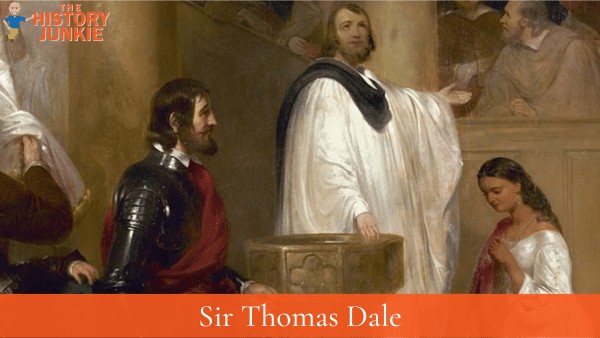
Sir Thomas Dale was an English naval commander and deputy-governor of the Virginia Colony in 1611 and from 1614 to 1616.
He is best remembered for his strict and effective administration in Virginia, which helped to establish order and prosperity in the colony.
Sir Thomas Dale was a professional soldier who was appointed marshal and acting governor of the Virginia Colony in 1611.
He arrived in May with 300 well-armed soldiers and immediately ordered the construction of palisades to protect the James River settlements from attack.
When the governor and lieutenant governor were both absent, Dale served as acting governor until Gates returned in August.
He was a member of the governor's council from March 1612 and again served as acting governor from March 1614 to April 1616.
In June 1611, Sir Thomas Dale issued military regulations for his soldiers in the Virginia Colony. The regulations were harsh, prescribing severe corporal punishment or death for many infractions.
Dale did not hesitate to impose these penalties, including forced labor, capital punishment, and even condemning a man to starve to death.
After he arrived, Sir Thomas Dale imposed strict discipline and organized work efficiently, transforming the chaotic and ineffective Virginia Colony into a well-functioning military and commercial outpost.
He ordered the colonists to sow grain and tend to the livestock, and he attacked and defeated the Nansemond Indians in June 1611.
He marched against other Indian tribes farther up the James River and established the settlement of Henricus in honor of his patron, Prince Henry.
Dale also attacked the Appamattuck towns and founded the settlement of Bermuda Hundred. In 1613, he held Pocahontas captive as a guarantee of peace with her father, Powhatan.
Dale and the minister Alexander Whitaker helped Pocahontas convert to Christianity, and he assented to her marriage to John Rolfe in 1614.
Sir Thomas Dale's strict discipline and efficient organization of work transformed the chaotic and ineffective Virginia Colony into a well-functioning military and commercial outpost.
16. Peter Minuit
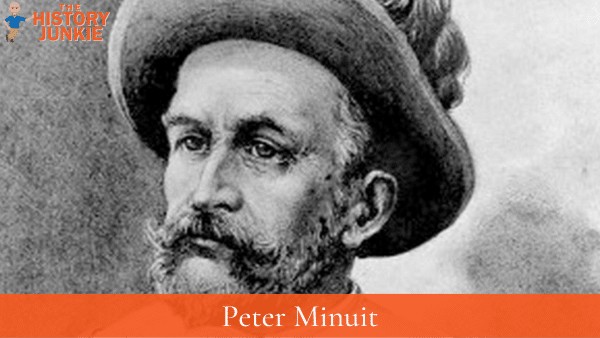
Peter Minuit, a Walloon merchant from Tournai, Belgium, was the third director of the Dutch North American colony of New Netherland from 1626 to 1631.
He is generally credited with orchestrating the purchase of Manhattan Island for the Dutch East India Company from the Lenape, the area's indigenous people.
The purchase price was 60 guilders' worth of trade goods, which is equivalent to about $1,143 U.S. dollars in 2020.
Manhattan later became the site of the Dutch city of New Amsterdam and the borough of Manhattan of modern-day New York City.
He later tried to colonize the country of Sweden.
During his final voyage, Minuit drowned when the ship he was visiting, The Flying Deer, was lost with all hands during a hurricane near St. Kitts.
One ship sank near the Azores; another arrived without a mast.
The losses suffered, such as goods and Minuit, caused irreversible damage to Sweden's colonization attempts.
Two years later, Swedish Lt. Måns Nilsson Kling, whose rank was raised to captain, replaced Minuit as governor. Nine expeditions to the colony were carried out before the Dutch captured it in 1655.
17. James Oglethorpe
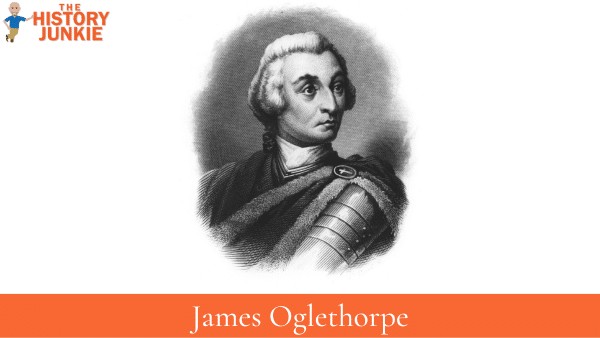
James Oglethorpe was a British soldier, Member of Parliament, philanthropist, and the founder of the Province of Georgia in what was then colonial-era British America.
As a social reformer, he hoped to resettle Britain's "worthy poor" in the New World, initially focusing on those who were imprisoned for debt.
He was born into a prominent British family in 1696 and left college and a British Army commission to travel to France, where he attended a military academy and fought in the Austro-Turkish War. After returning to England in 1718, he was elected to the House of Commons in 1722.
Oglethorpe's early years were relatively undistinguished until 1729, when he was made chair of the Gaols Committee that investigated British debtors' prisons.
The report was published to widespread attention, and Oglethorpe began publicizing the idea of a new colony to serve as a buffer between the Carolinas and Spanish Florida. After being granted a charter, Oglethorpe sailed to Georgia in November 1732.
James Edward Oglethorpe was a major figure in the early history of the colony of Georgia. He held much civil and military power and instituted a ban on slavery and alcohol.
During the War of Jenkins' Ear, Oglethorpe led British troops in Georgia against Spanish forces based in Florida. In 1740, he led a lengthy siege of St. Augustine, which was unsuccessful. However, he defeated a Spanish invasion of Georgia in 1742.
Oglethorpe left the colony after another unsuccessful invasion of St. Augustine and never returned. In 1745, he led some government troops in the Jacobite rising but was blamed for the British defeat in the Clifton Moor Skirmish.
Although he was cleared in a court-martial, Oglethorpe never held British command again.
In 1754, he lost reelection to the House of Commons and left England. He may have served undercover in the Prussian Army during the Seven Years' War.
In his later years, Oglethorpe was prominent in literary circles, becoming close to James Boswell and Samuel Johnson.
18. Thomas Hutchinson
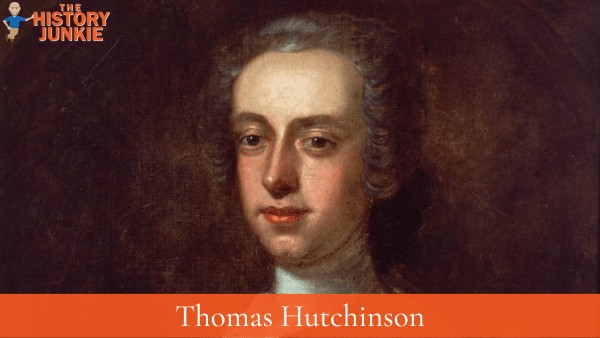
Thomas Hutchinson was a successful merchant, politician, and historian who served as lieutenant governor and then governor of the Province of Massachusetts Bay from 1758 to 1774.
He was a polarizing figure who was blamed by John Adams and Samuel Adams for his support of British taxes on the colonies.
Lord North, the British Prime Minister at the time, also blamed Hutchinson for contributing to the tensions that led to the American Revolutionary War.
Thomas Hutchinson's Boston mansion was ransacked in 1765 during protests against the Stamp Act. His collection of materials on early Massachusetts history was damaged, and he was forced to flee the city.
In 1770, as acting governor, Hutchinson exposed himself to a mob attack in the aftermath of the Boston Massacre. After the massacre, he ordered the removal of troops from Boston to Castle William.
In 1773, letters of Hutchinson calling for the abridgment of colonial rights were published. This further intensified their dislike of him in the colony, and he was replaced as governor in May 1774 by General Thomas Gage.
Hutchinson went into exile in England, where he advised the government on how to deal with the colonists.
19. Anne Bradstreet
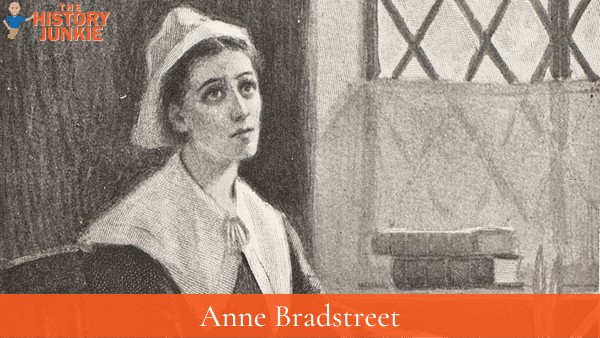
Anne Bradstreet was a prominent English poet who became the first published writer in England's North American colonies.
Her large body of poetry, as well as her personal writings published posthumously, established her as a significant figure in American literature.
Born to a wealthy Puritan family in Northampton, England, Anne Bradstreet was a well-read scholar who was particularly influenced by the works of Guillaume de Salluste du Bartas. At the age of 16, she married Simon Bradstreet, and they migrated to Massachusetts Bay Colony with their young family in 1630.
As the mother of eight children and the wife and daughter of public officials in New England, Bradstreet found time to write poetry in addition to her other duties. Her early works were in the style of du Bartas, but her later writings developed into a unique style that focused on her role as a mother, her struggles with the sufferings of life, and her Puritan faith.
Her first collection of poetry, The Tenth Muse Lately Sprung Up in America, was widely read in both America and England.
20. Patrick Henry

Patrick Henry was a prominent American politician, orator, and planter. He is best known for his speech to the Second Virginia Convention in 1775, in which he declared, "Give me liberty, or give me death!".
Henry served as the first and sixth post-colonial Governor of Virginia from 1776 to 1779 and from 1784 to 1786.
Born in Hanover County, Virginia, Patrick Henry was primarily educated at home. He ran a store for a short time but then assisted his father-in-law at Hanover Tavern. After that, he became a lawyer through self-study.
Henry's practice took off in 1760 after he won a case against the Anglican clergy in the Parson's Cause. He was then elected to the Virginia House of Burgesses, where he quickly became known for his fiery speeches against the Stamp Act of 1765.
In 1774, Patrick Henry served as a delegate to the First Continental Congress. He helped to draft the Petition to the King and the Continental Association. Henry's oratory at the convention and his actions during the Gunpowder Incident made him even more popular among the people of Virginia.
Also Read: 9 Reasons the Olive Branch Petition Failed
At the Fifth Virginia Convention in 1776, Henry urged independence. He served on the committee that drafted the Virginia Declaration of Rights and the original Virginia Constitution. Henry was then elected governor under the new charter and served a total of five one-year terms.
After leaving the governorship in 1779, Patrick Henry served in the Virginia House of Delegates until 1784, when he was elected governor for a second time. He served two more terms as governor before returning to the practice of law.
Henry was initially supportive of the Articles of Confederation, but he became increasingly concerned about the weakness of the national government under this system. He declined the appointment as a delegate to the 1787 Constitutional Convention because he feared that the convention would create a strong central government.
Henry also opposed the ratification of the United States Constitution. He feared that the Constitution would create a powerful central government that would threaten the rights of the states and the people. He also argued that the Constitution did not include a Bill of Rights, which he believed was essential to protect the rights of the people.
Henry returned to the practice of law in his final years and declined several offices under the federal government.
